KHẢO SÁT TỶ LỆ TĂNG ĐỘ CỨNG ĐỘNG MẠCH VÀ MỘT SỐ YẾU TỐ LIÊN QUAN Ở BỆNH NHÂN TĂNG HUYẾT ÁP NGUYÊN PHÁT KÈM HỘI CHỨNG ĐỘNG MẠCH VÀNH MẠN
Nội dung chính của bài viết
Tóm tắt
Mục tiêu: Khảo sát tỷ lệ tăng độ cứng động mạch và một số yếu tố liên quan. Đối tượng và phương pháp: Thiết kế mô tả cắt ngang, trên bệnh nhân tăng huyết áp nguyên phát kèm hội chứng động mạch vành mạn đến khám tại Bệnh viện Đa khoa Bạc Liêu từ tháng 06/2024 đến tháng 02/2025. Độ cứng động mạch xác định dựa trên vận tốc sóng mạch tại cánh tay - cổ chân (baPWV). Kết quả: Tổng số 70 bệnh nhân, nam giới 51,4%. Tỷ lệ tăng độ cứng động mạch là 65,7%. Hút thuốc, đái tháo đường, bệnh thận mạn, đau thắt ngực, thời gian tăng huyết áp trên 10 năm là các yếu tố làm tăng độ cứng động mạch với OR dao động từ 2,50 - 14,17. Độ cứng động mạch tương quan với tuổi, huyết áp tâm thu và thời gian tăng huyết áp với hệ số tương quan lần lượt là r=0,313; r=0,457 và r=0,433. Kết luận: Bệnh nhân tăng huyết áp nguyên phát kèm hội chứng động mạch vành mạn có tỷ lệ tăng độ cứng động mạch khá cao. Hút thuốc, đái tháo đường, bệnh thận mạn, đau thắt ngực, thời gian tăng huyết áp trên 10 năm là các yếu tố nguy cơ làm tăng độ cứng động mạch.
Chi tiết bài viết
Từ khóa
Tăng huyết áp nguyên phát, hội chứng động mạch vành mạn, độ cứng động mạch
Tài liệu tham khảo
2. Smith SM, et al. Predictors and outcomes of resistant hypertension among patients with coronary artery disease and hypertension. Journal of hypertension. 2014. 32(3), p. 635-643.
3. Bonarjee VV. Arterial stiffness: a prognostic marker in coronary heart disease. Available methods and clinical application. Frontiers in cardiovascular medicine. 2018. 5(1), p. 64.
4. Vrints C, et al. 2024 ESC guidelines for the management of chronic coronary syndromes: developed by the task force for the management of chronic coronary syndromes of the European Society of Cardiology (ESC) endorsed by the European Association for Cardio-Thoracic Surgery (EACTS). European heart journal. 2024. 45(36), p. 3415-3537.
5. Laurent S, et al. SPARTE study: normalization of arterial stiffness and cardiovascular events in patients with hypertension at medium to very high risk. Hypertension. 2021. 78(4), p. 983-995.
6. Zheng X, et al. Arterial stiffness as a predictor of clinical hypertension. The Journal of Clinical Hypertension. 2015. 17(8), p. 582-591.
7. Nguyễn Đình Linh, Hồ Thị Kim Ngân, Trần Đức Hùng. Nghiên cứu mối liên quan giữa vận tốc sóng mạch (pulse wave velocity-PWV) với một số yếu tố nguy cơ và mức độ tổn thương động mạch vành bằng thang điểm SYNTAX ở bệnh nhân bệnh tim thiếu máu cục bộ mạn tính. Tạp chí Y học Việt Nam. 2022. 511(1), tr. 62-65.
8. Agbaje A. Arterial stiffness precedes hypertension and metabolic risks in youth: a review. Journal of hypertension. 2022. 40(10), p. 1887-1896.


